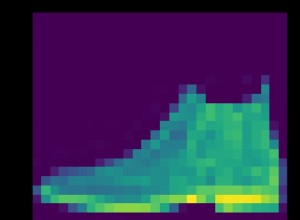Ho trovato questo fantastico articolo. http://www.herongyang.com/JDBC/MySQL-CallableStatement -Multiple-ResulSet.html
Ecco il codice di quell'articolo.
/**
* MySqlCallMultipleResultSet.java
* Copyright (c) 2007 by Dr. Herong Yang. All rights reserved.
*/
import java.sql.*;
public class MySqlCallMultipleResultSet {
public static void main(String [] args) {
Connection con = null;
try {
com.mysql.jdbc.jdbc2.optional.MysqlDataSource ds
= new com.mysql.jdbc.jdbc2.optional.MysqlDataSource();
ds.setServerName("localhost");
ds.setPortNumber(3306);
ds.setDatabaseName("HerongDB");
ds.setUser("Herong");
ds.setPassword("TopSecret");
con = ds.getConnection();
// Create CallableStatement
CallableStatement cs = con.prepareCall("CALL HeadTail(?)");
// Register OUT parameters
cs.registerOutParameter(1, java.sql.Types.INTEGER);
// Execute the CALL statement and expecting multiple result sets
boolean isResultSet = cs.execute();
// First ReulstSet object
if (!isResultSet) {
System.out.println("The first result is not a ResultSet.");
return;
}
// First ReulstSet object
System.out.println("Head of the table:");
ResultSet res = cs.getResultSet();
while (res.next()) {
System.out.println(" "+res.getInt("ID")
+", "+res.getString("FirstName")
+", "+res.getString("LastName")
+", "+res.getTimestamp("ModTime"));
}
res.close();
// Move to the next result
isResultSet = cs.getMoreResults();
if (!isResultSet) {
System.out.println("The next result is not a ResultSet.");
return;
}
// Second ReulstSet object
System.out.println("Tail of the table:");
res = cs.getResultSet();
while (res.next()) {
System.out.println(" "+res.getInt("ID")
+", "+res.getString("FirstName")
+", "+res.getString("LastName")
+", "+res.getTimestamp("ModTime"));
}
res.close();
// Retrieve OUT parameters
System.out.println("Total number of records: "+cs.getInt(1));
// Close resource
cs.close();
con.close();
} catch (Exception e) {
System.err.println("Exception: "+e.getMessage());
e.printStackTrace();
}
}
}




